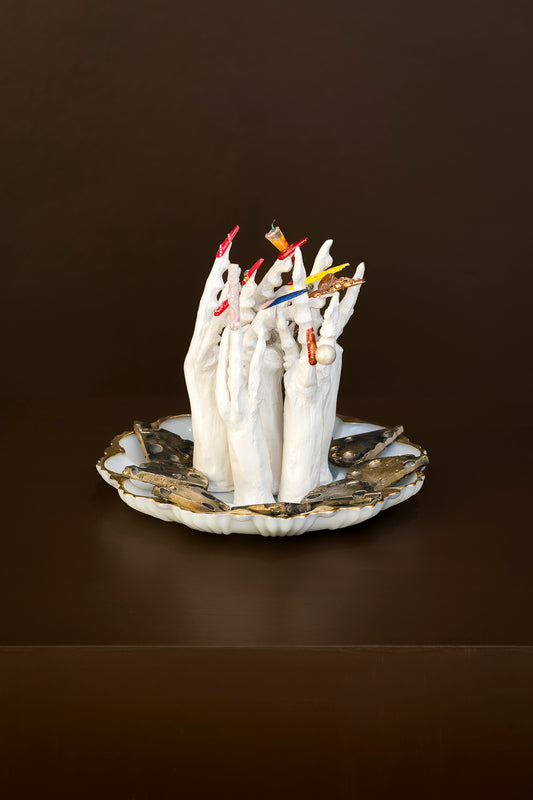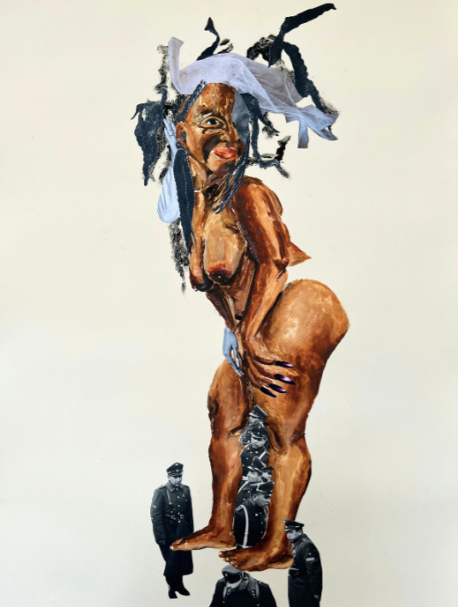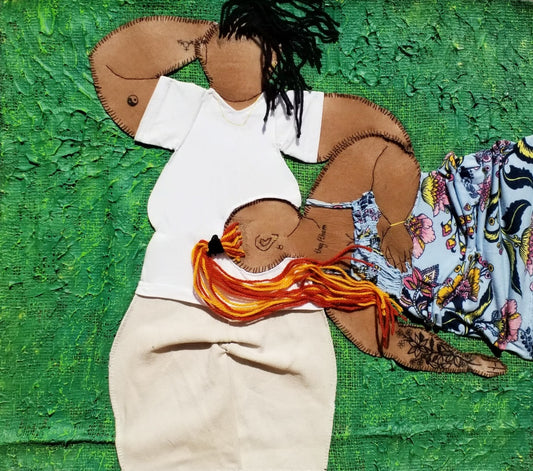Collection: AT THEIR FEET - CREATIVE KNOWLEDGE RESOURCE | CURATED BY VONI BALOYI
Artistic practice expects a large emotional stake from artists who dare to partake in the pursuit of production. Traditionally this is weathered within the confines of one’s studio, laptop, camera, canvas or mind, only to be revealed to us upon the white space that is the gallery wall. Even in this moment, the artist is not always there to mediate, converse or connect with the audience who engages with their work. In essence, the act of creating art from ideation to installation and viewing can render an artist isolated in ways that do not consider care and community. With a focus on the moment of production At their Feet attempts to focus on process beside eventual outcome.
The title is inspired by Nadia Davids’ seminal play At Her Feet (2006) which is a one woman play in one act that reflects upon the lives of six muslim women coming to terms with their identity and religion in relation to the aftermath of 9/11 (2006). A key reason for the significance of this text as it pertains to the exhibition is its ability to push the boundaries of time as David traverses multiple moments in time through the lived experiences of women all intermingled in this one traumatic event. How these lived experiences complement and conflict with one another as these characters attempt to make sense of their identity, although executed through one body, effectively tells the story of individuals who are the sum of a larger community.
At their Feet breaks down the silos of artistic production by pairing artist’s and asking them to instill practices of care by being in service to their fellow colleague. Each artist has produced an artwork that grapples with themes personal to their identity, worldview, lived experience, or what they find themselves contending with at this particular moment in their practice. These artworks have then been further engaged with by one of their contemporaries who produces a work in response to theirs. At every step each artist has had to consider what acts of care have meant for them and how they would wish to approach a fellow artist’s artwork, and how they would wish for their work to be approached. In the end, with the help of you as our audience, we will produce a working lexicon of what responsiveness, reciprocity, and relativity can look like within the context of artistic production when dealing with a diverse set of worldviews, experiences, and identities.
Finding meaning and function in process and the anarchival calls us in to reflect as a community not only the potentiality of facing oppressive regimes and violent social constructions within art practices but also explore the limits and potential of exhibition-making in times of crisis. We may find ourselves calling one another in, out, or even around, but at the centre of it all is the intention not to avoid the conflict, but to rather dwell as a community in the grey, the ambiguity, the silences so that we can begin to name in order to heal. This focus on responsiveness, reciprocity, and relativity opens up a series of initial inquiries; What has caught the eye of the beholder? What has captured the ear of the listener? Thus, what have we chosen to carefully work into our acts of service through our responses by means of artistic production?

















